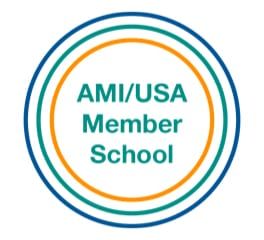Bringing the Montessori Research Method Home
Many children find the work their parents are doing interesting and engaging. By working with your child/ren with these tasks, you are sharing time and skills. You may just find that there is a topic that could be explored and investigated which can extend their interests into the classroom. Researching the reason that forests do not have anyone who rakes the leaves but all of our neighbors do can lead to deeper appreciation. I remember a time when a child came in from a weekend of planting fall bulbs and wanted to do research about the reason some seeds are sewn in different times of the year. This then spread throughout the classroom with others researching plants that only germinate in unique ways like after a forest fire and so on. The beauty of the Montessori method is that the children learn how to investigate their interests and explore more.
As parents, we have countless opportunities to support this work at home. It can begin with a simple, “That seems like a really interesting thing to research…” or “I’m not sure, let’s look it up and find out more.”
When our children were first beginning to learn to speak, they were always asking: “This?” or “That?” We can continue to support their inquisitive nature by extending beyond the simple answer—we can ponder with them the why? of life.
Research in the Classroom
You may frequently hear about the research the children are doing in their classroom. This is particularly true in the elementary ages. Even on the first day of school, children tend to come into their classrooms ready to explore something they encountered over the summer or on the walk in. Research in the Montessori classroom is a jumping off point for our children. They are driven to find out more. They are excited to learn something that is new. They are proud when sharing their knowledge with friends and family.
For these reasons, I wanted to share with you how you can support this work at home. Depending on the skill levels of your child/ren, the depth and complexity of the product will vary but the overall process is the same.
Tips for Bringing the Montessori Research Method Home:
1. Research begins with an observation and/or question (the how? )
For example, “I see less birds in the fall and winter months than I do in the spring and summer. I wonder why?” or “What is the fastest animal in Colorado?”
This is often a point where a parent on the run might say something like:
“I don’t know, now it’s time to go to___” or “Birds migrate to the south during the winter.”
The answers to these questions are often times short and too detailed or not enough to satisfy the interest. Either response can unintentionally discourage further searching.
2. Meeting the child’s question
In the Montessori classroom, the questions children come to us with are met with “That is a wonderful question. I wonder where we can find out the answer?” or, “I’m sure there is a book/resource available that we can help you find out.”
3. Dive in and explore ( the why? )
Teachers introduce children to concepts to support research, determining the validity of sources:
- “Look at all of the ads on the webpage, does that seem like a reputable source of information?”
- “What is the publication date of the article/book/post/etc.? Are there any new sources available that we can use to double check what you found out here?”
- “How does that match/mismatch with what you already knew or learned? What do we do when we have conflicting information?” — find more resources.
4. Organize the information into a product ( the what? )
- This can range anywhere from a simple fact “book” created by the child to a formal essay with appendices and diagrams, or other more artistically focused products.
- The main purpose here is not always the perfection of the product but more the process. The how? And what? of research.
So, how does this all fit into your busy schedule?
1. Start with maintaining an open and inquisitive mind towards the world around us. Everything we encounter each day has the potential for deeper exploration and discovery. Practice looking for the how? or what? in your daily life.
-
- How is it that every time I interact with this person, ___happens?
- I notice that when I am feeling a little sick, small things start bothering me. What could be happening?
2. Sit back and explore with your child/ren.
-
- Being part of the experience, (even when you already know the answer) is a great way to share in the discovery of knowledge.
3. The process does not have to be exhaustive. If your child finds the answer that is satisfactory, let them stop and move on to something else.
-
- If you are still interested, it can be fun to model that you are still going to dig deeper.
4. Enjoy the time you are spending.
-
- If the process is not enjoyable for you or your child, know that it is ok to let it go.
- Do not get caught up in perfection of a final product because the process of Why? and How? is what the goal is.
The post Bringing the Montessori Research Method Home appeared first on Fort Collins Montessori School.





